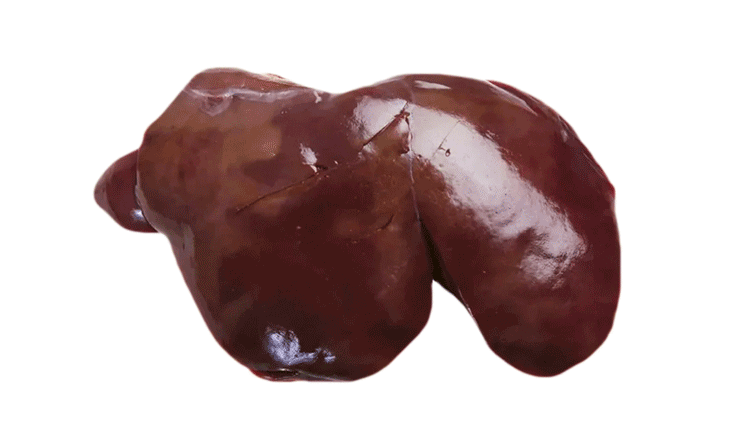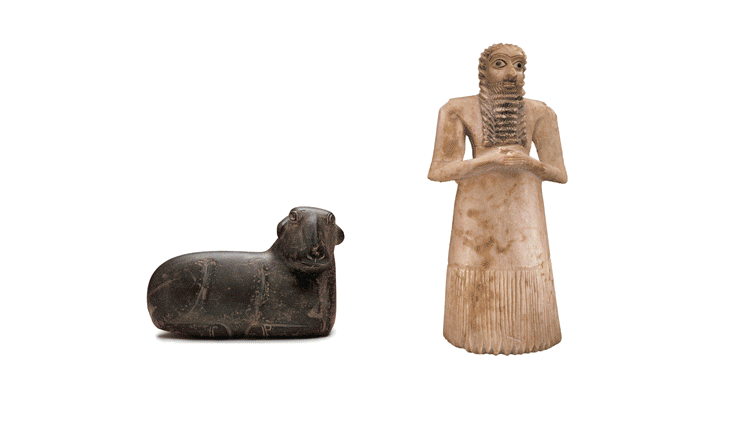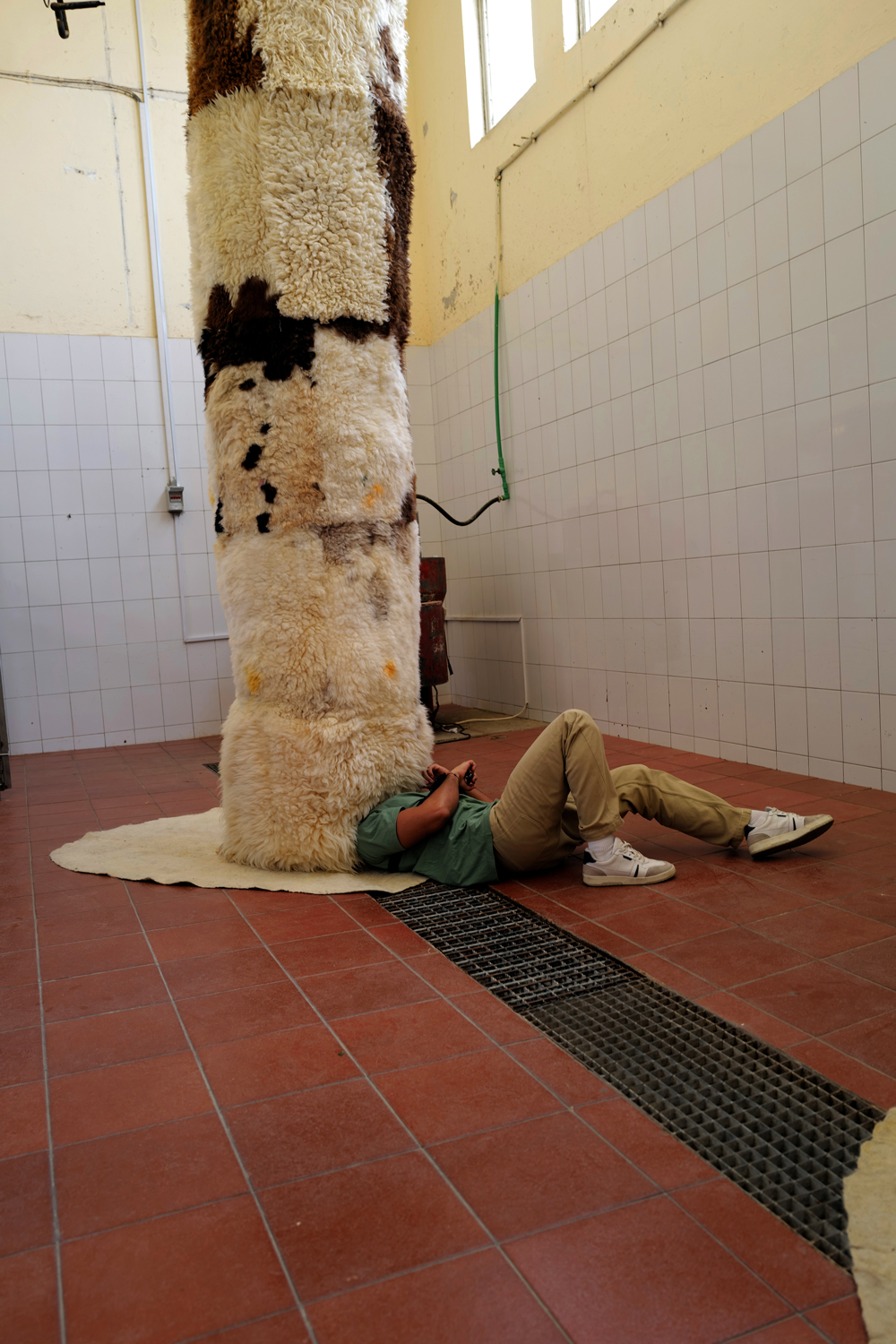UTILITY OF BEING is
a site-specific installation conceived from the gathered pelts of the fat-tailed Awassi sheep—a natural byproduct of the slaughtering
process
in the region. Staged within the historic Old Slaughterhouse of the
Emirate of Sharjah, the installation comprises of pneumatic tubular forms echoing the visceral lines of animal entrails. The continuously
inflated bodies penetrate and traverse the space while suspended from the hooks and rails originally used for handling animal carcasses. The work serves as a metaphor for
understanding the tension
that lies at the edge of survival and commerce,
challenging notions of human-animal relationality, the alchemy of material processes, and the fragility of
biological existence.
Images by Danko Stjepanovic coutersy of Sharjah Architecture Triennial, Alessandro Fagioli, and Omar Al Gurg
Disclaimer:
The animals whose skins are presented in this installation were not killed for the production of this work. The collected skins are stitched together and then inflated using internal air blowers; no plastic or PVC casing was used in the installation.
As a closure, we held a ceremonial bagpipe procession at the Old Slaughterhouse of Sharjah, commemorating the fat-tailed Awassi sheep. The bagpipe, or ḥabbān (هبان), traditionally crafted from a singular animal skin, becomes a lyrical vessel, carrying a rich history rooted in the region. A musical spell from the world of shepherds, the piper grants a voice to the animal while manipulating its aerated body.
Against the backdrop of the UTILITY OF BEING installation, featuring inflated forms made of sheepskins, a metaphor unfolds—an interplay of artifact and ritual—binding humans and animals in a dialectical interconnectedness.
Images by Danko Stjepanovic coutersy of Sharjah Architecture Triennial, Alessandro Fagioli, and Omar Al Gurg
Disclaimer:
The animals whose skins are presented in this installation were not killed for the production of this work. The collected skins are stitched together and then inflated using internal air blowers; no plastic or PVC casing was used in the installation.
As a closure, we held a ceremonial bagpipe procession at the Old Slaughterhouse of Sharjah, commemorating the fat-tailed Awassi sheep. The bagpipe, or ḥabbān (هبان), traditionally crafted from a singular animal skin, becomes a lyrical vessel, carrying a rich history rooted in the region. A musical spell from the world of shepherds, the piper grants a voice to the animal while manipulating its aerated body.
Against the backdrop of the UTILITY OF BEING installation, featuring inflated forms made of sheepskins, a metaphor unfolds—an interplay of artifact and ritual—binding humans and animals in a dialectical interconnectedness.

















